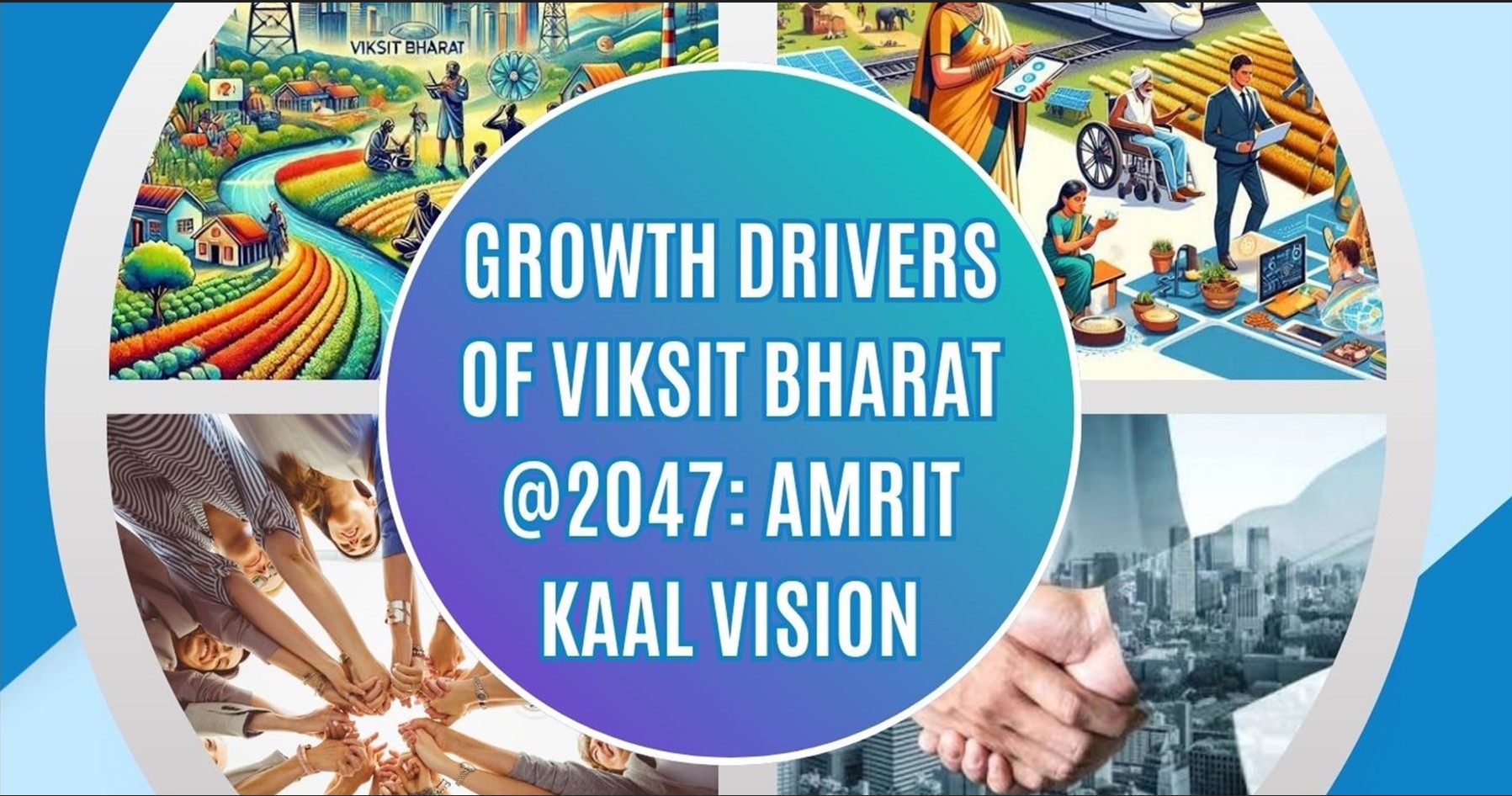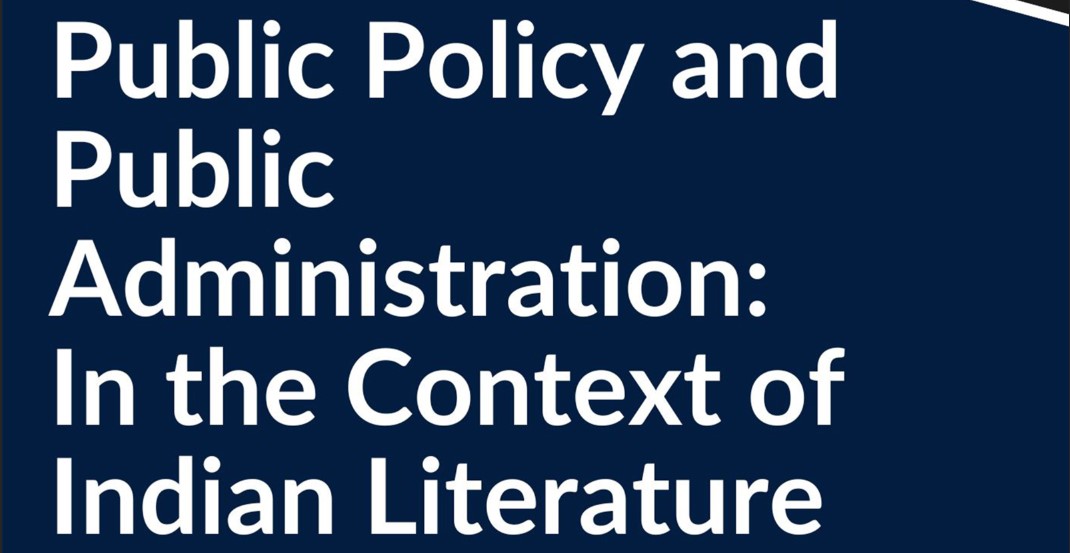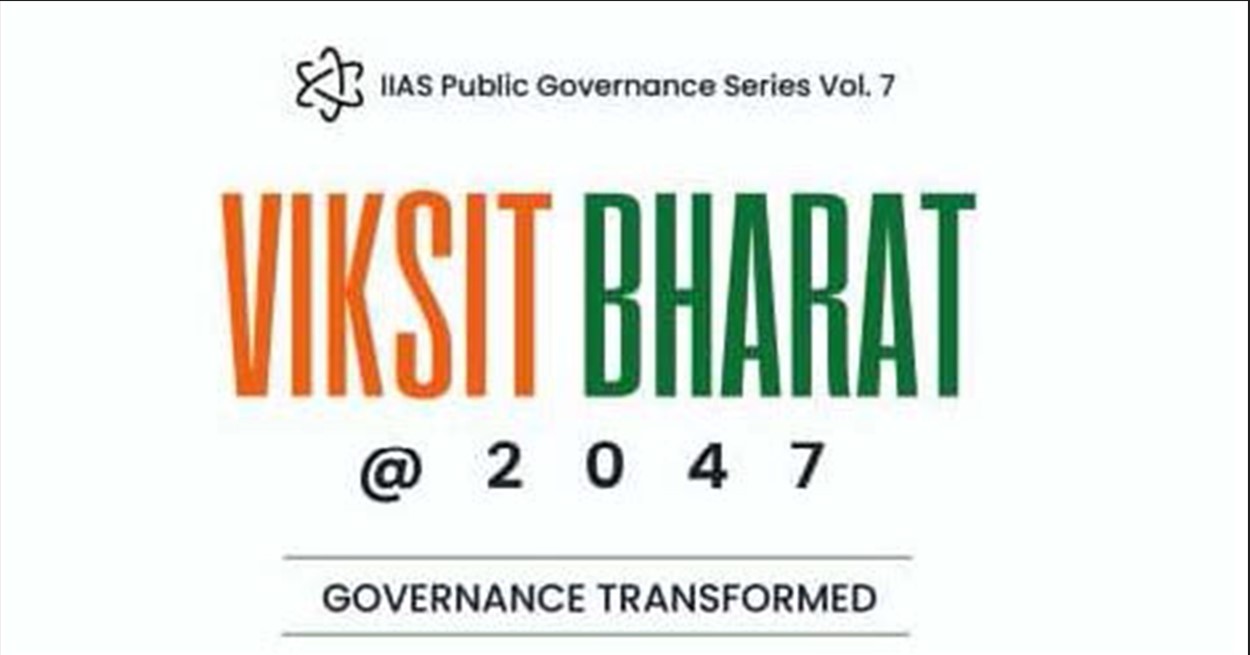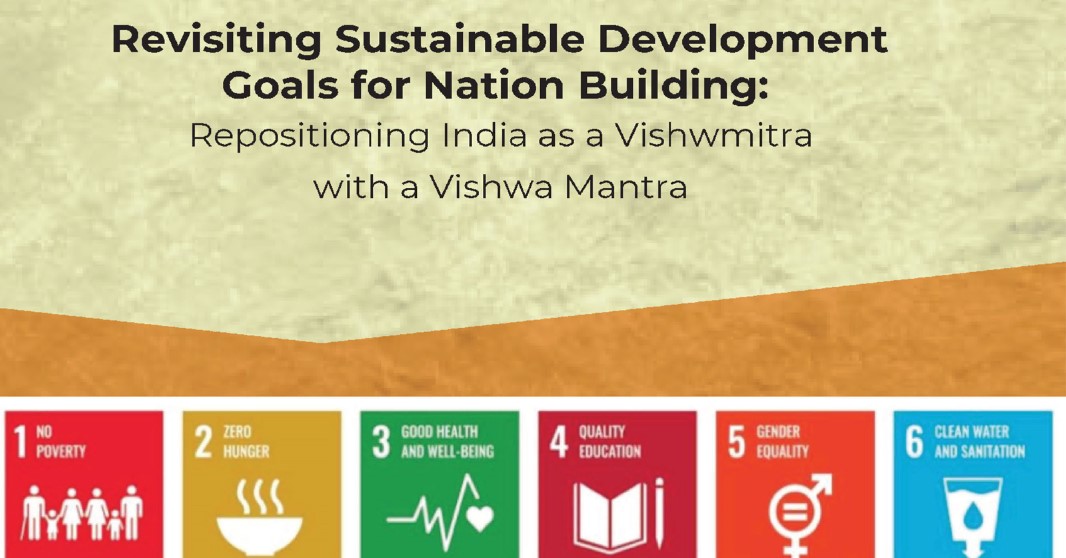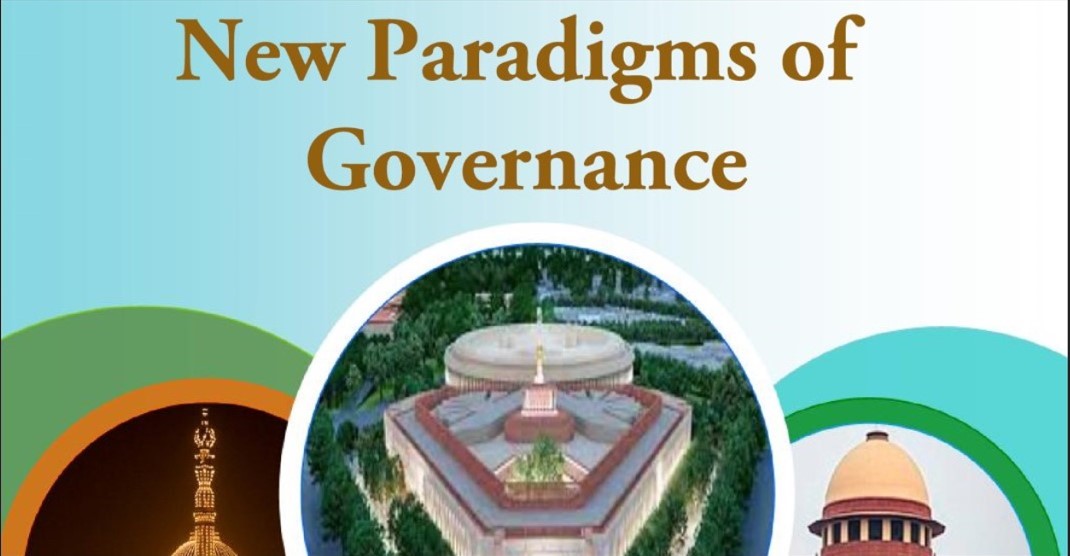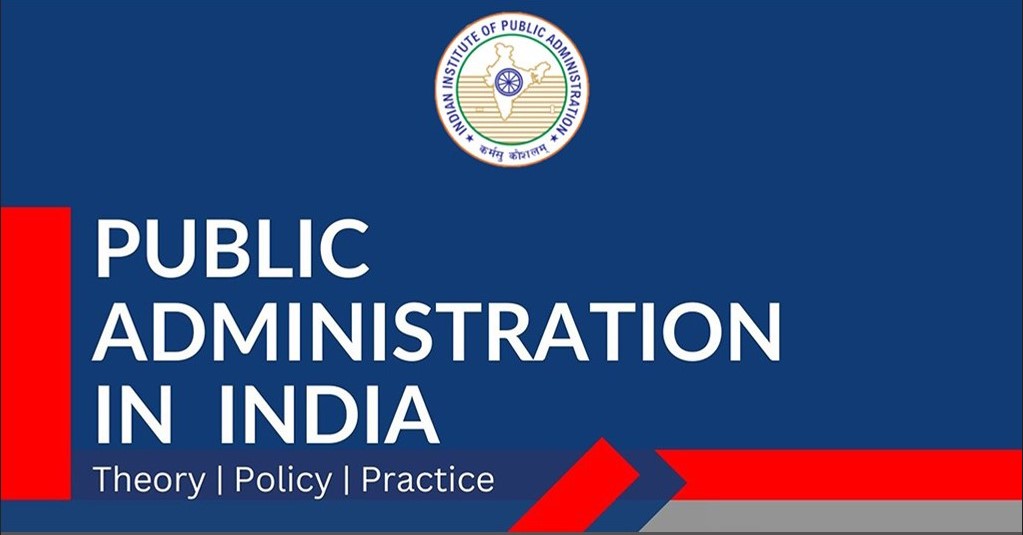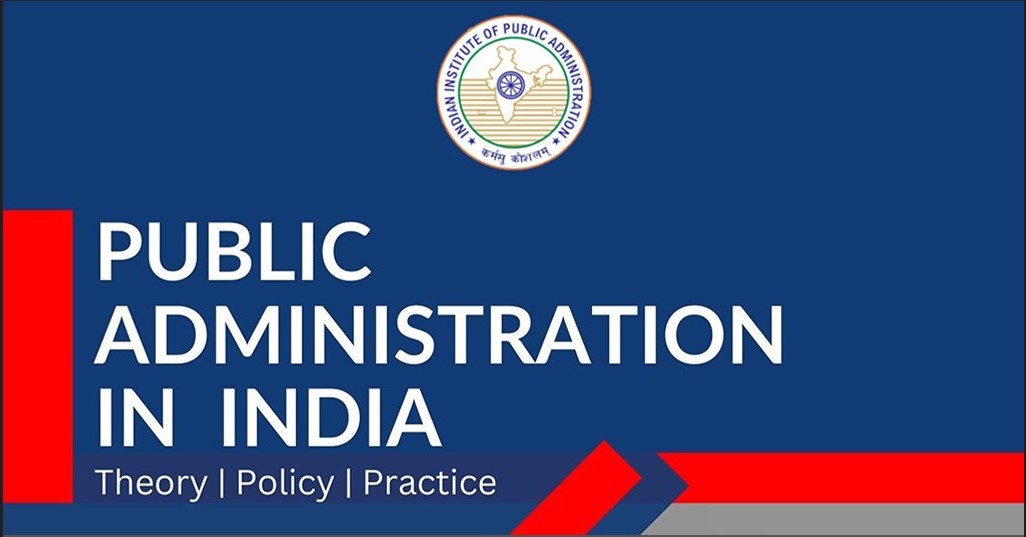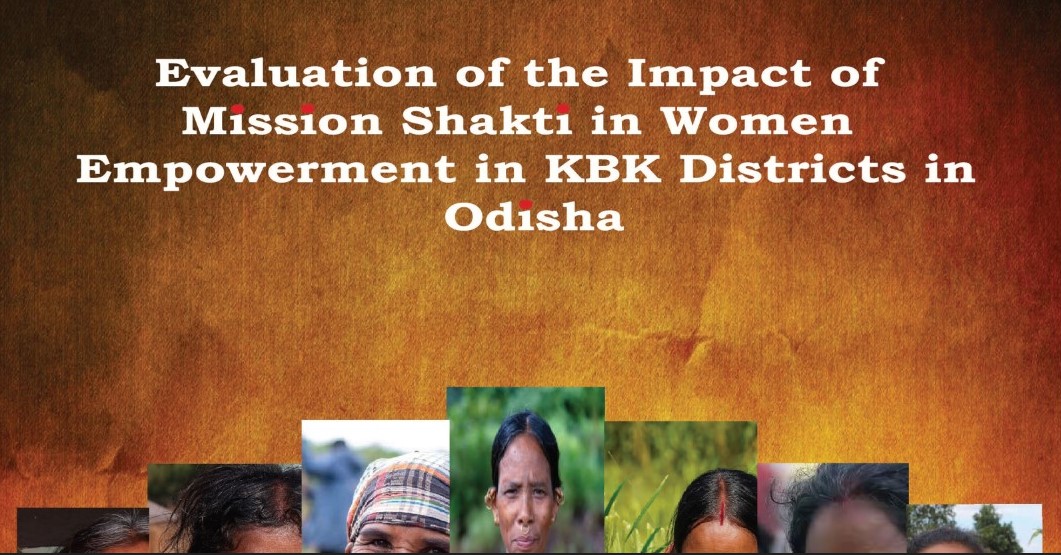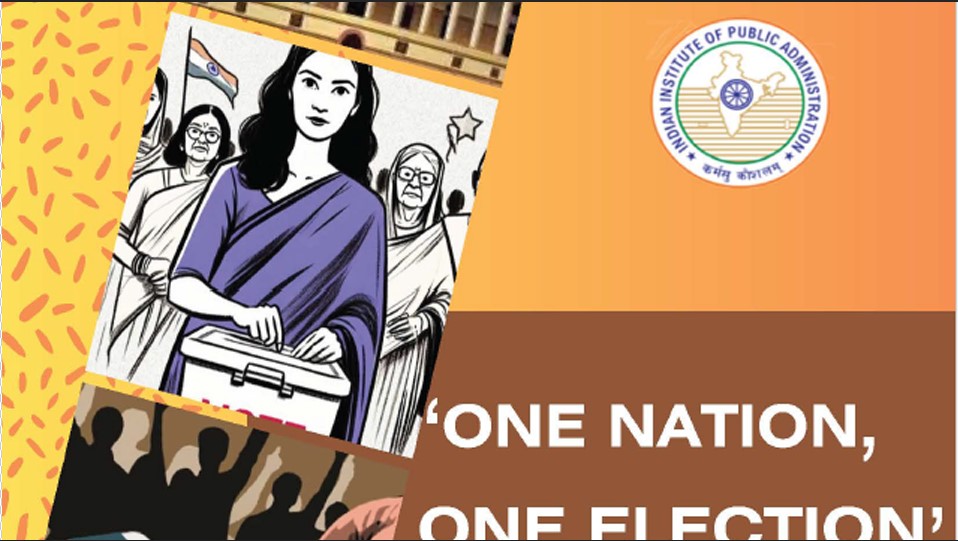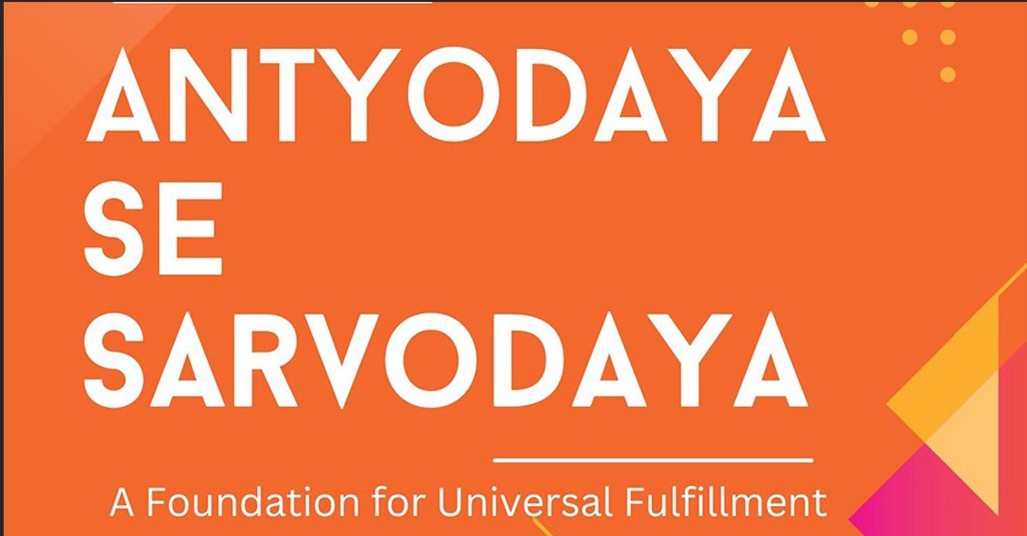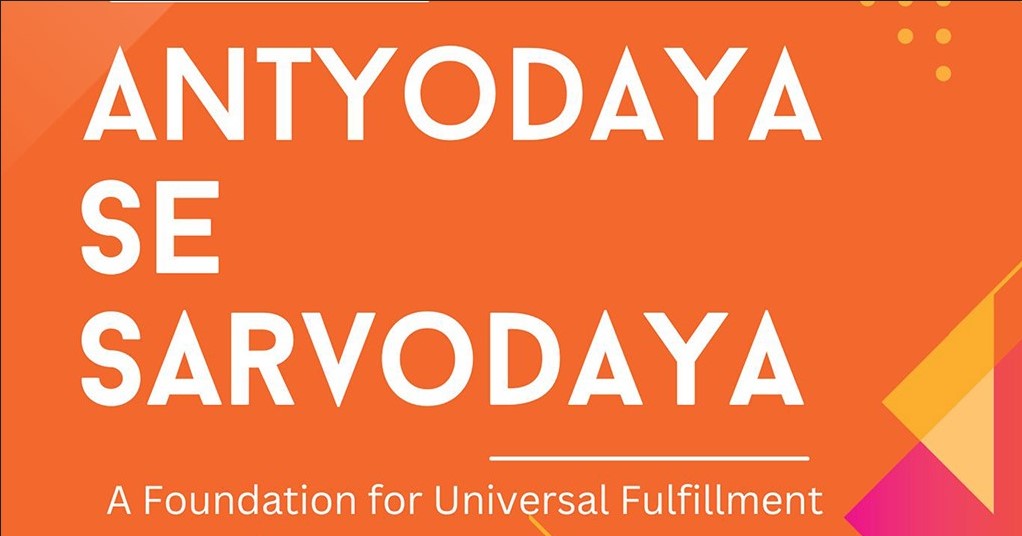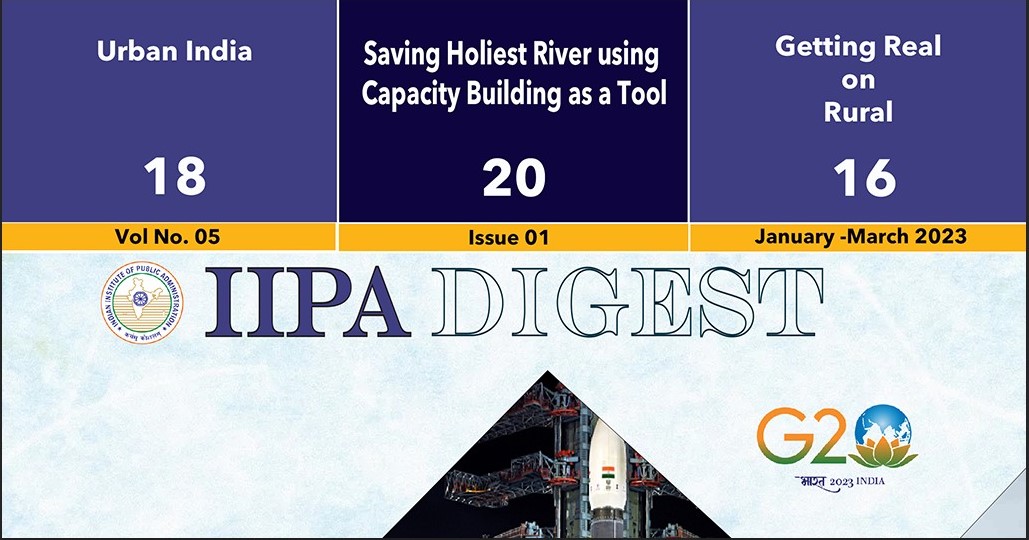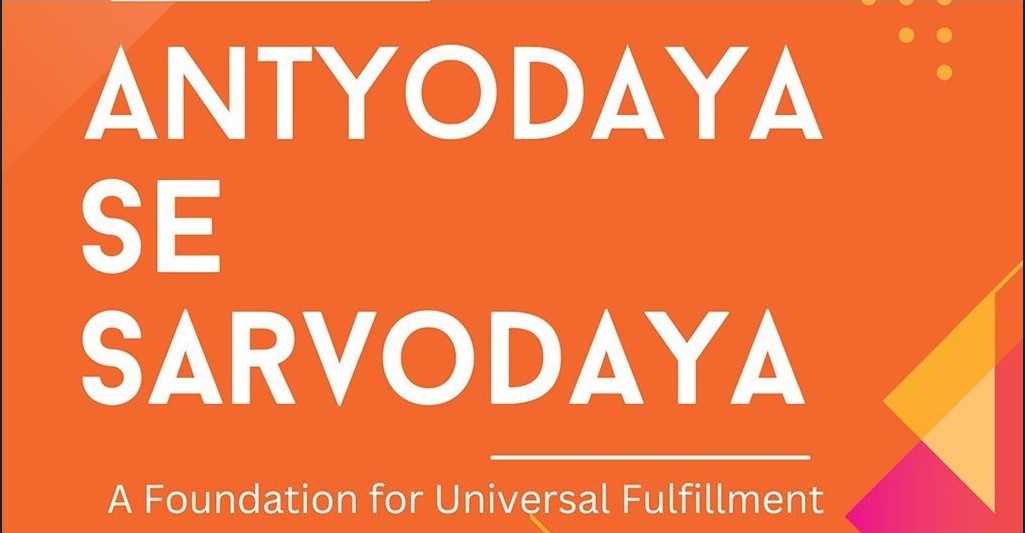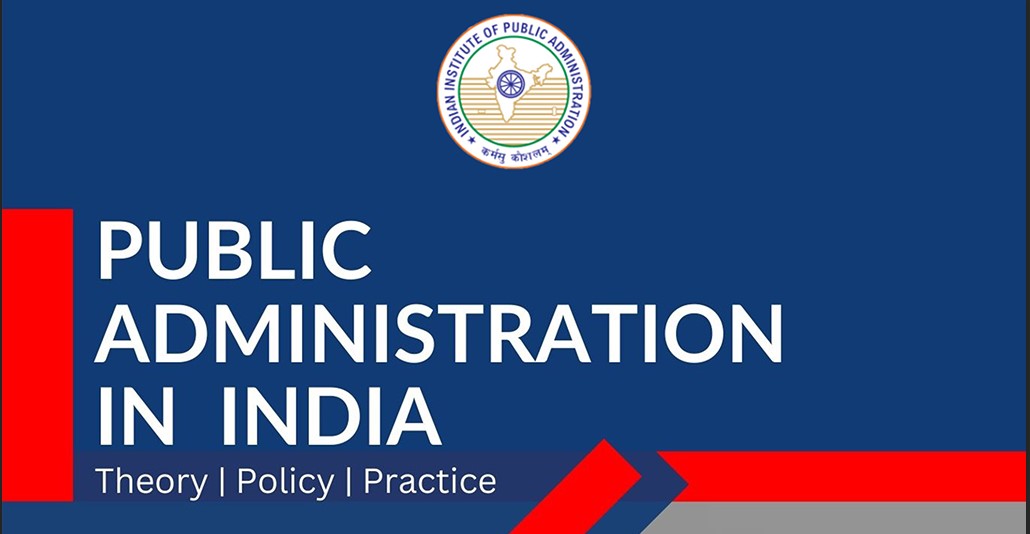The LiFE Mission of Viksit Bharat: A Blend of Environmental Policy and Governance for Connecting Individuals with the Global Movement for Sustainability
Abstract
Ecological issues give birth to environmental discourses on human-nature interaction worldwide, which ultimately reinforce the need for environmental sustainability. In the globalization era, environmental security has become one of the key security issues, especially for the countries in the Global South. India is facing acute challenges, such as a rise in atmospheric CO2; high fast-paced melting of Himalayan ice sheets, the expected rise in global sea level, and consequently, the global economy will lose around 18% of GDP by 2050 if no climate action is taken. To cope with these issues and achieve sustainability, the ‘Lifestyle for the Environment – LiFE Mission’ was introduced by our Prime Minister, Shri Narendra Modi, in 2021, which aims to bring individual behaviours to the centre of climate action. Our traditional knowledge, climate-friendly daily household practices, and leveraging technology strongly position India to lead the narrative of addressing climate change. The paper highlights the importance of the LiFE mission, making it the most relevant policy to overcome contemporary challenges for Viksit Bharat. It explores the conceptual framework, strategic objectives, implementation challenges, and global implications and discusses a future perspective on India’s leadership in a global movement for the environment and sustainable development.
Keywords: LiFE mission, global climate movement, environmental policy and governance.
1. Introduction: Evolution of Environmental Policy in India
“We cannot turn back time, but we can grow forests, revive water sources, and bring back soils. We are the generation that can make peace with the land.” - UNEP for World Environment Day 2024.
Environmental policy is the commitment of an organization to the laws, regulations, and other policy mechanisms concerning environmental issues. These issues generally include air and water pollution, waste management, ecosystem management, maintenance of biodiversity, the protection of natural resources, wildlife, and endangered species, use of renewable energy sources, regulation of toxic substances, including pesticides and many types of industrial waste. Environmental policy comprises two major terms: Environment and Policy. Environment refers to the physical ecosystems but can also consider the social dimension (quality of life, health) and the economic dimension (resource management, biodiversity). The policy can be defined as a course of action or principle adopted or proposed by a government, party, business, or individua‖. Thus, Environmental policy refers to any course of action that is deliberately taken to manage human activities to prevent or mitigate harmful effects on natural resources, the ecosystem, or nature. Governments use different types of instruments to implement their environmental policies. For example, economic incentives and market-based instruments such as taxes and tax exemptions, tradable permits, and fees, greener public purchasing programs, bilateral agreements between the government and private firms, etc.
In the Indian Constitution, under Directive Principles of State Policy, Article 48 says the state shall endeavour to protect and improve the environment and to safeguard the forests and wildlife of the country; Article 51-A states that it shall be the duty of every citizen of India to protect and improve the natural environment including forests, lakes, rivers and wildlife and to have compassion for living creatures. The judicial activism, particularly by the Supreme Court and state High Courts strengthens the enforcement of environmental policies. With the establishment of the National Green Tribunal, this is expected to be further strengthened. The Supreme Court, for example, decided in a landmark judgment in 1995 that the right to the environment was a part of the Right to Life of Indian citizens, as enshrined in the Constitution.
Environmental policies in India have undergone significant evolution over the years to address the complex challenges posed by rapid industrialization, urbanization, and population growth. The introduction of environmental governance in India can be traced back to the establishment of the Ministry of Environment and Forests in 1985, renamed to the ‘Ministry of Environment, Forest and Climate Change’ in May 2014, reflecting a pivotal moment in recognizing the need to address ecological concerns about climate change, biodiversity loss, and resource depletion. Since then, a series of legislative measures, coupled with international commitments, have laid the foundation for a comprehensive framework to regulate and manage environmental issues. India, a rapidly developing nation with a burgeoning population, has witnessed unprecedented industrialization and urbanization, placing immense pressure on its natural resources. As a response to the growing environmental concerns, the Indian government has formulated and implemented a set of policies aimed at striking a delicate balance between economic development and ecological sustainability. This delicate equilibrium is reflected in the evolution of environmental policies, which have progressed from a mere acknowledgment of environmental issues to a proactive approach aimed at mitigating the impact of development on the ecosystem. Biodiversity conservation is another crucial dimension of India’s environmental policies. The nation boasts diverse ecosystems, ranging from the Himalayan mountains to the coastal regions, each hosting unique flora and fauna. The conservation of biodiversity is essential not only for ecological stability but also for the well-being of communities dependent on natural resources. India’s policies in this regard focus on the establishment of protected areas, sustainable forest management, and initiatives to safeguard endangered species. The legislative backbone of India’s environmental policies includes key Acts such as the Water (Prevention and Control of Pollution) Act, the Air (Prevention and Control of Pollution) Act, and the National Environment Policy. These legal instruments empower regulatory authorities to monitor and control various sources of pollution, providing a legal framework for industries to adhere to environmental standards. The incorporation of international agreements, such as achieving targets for renewable energy under the Paris Agreement, pushes for e-vehicles and vehicle emission norms, and the Convention on Biological Diversity underscores India’s commitment to global environmental initiatives. Additionally, the Coalition for Disaster Resilient Infrastructure and the International Solar Alliance are some of the fronts on which India has led by example.
As India continues its journey towards sustainable development, the effectiveness of environmental policies remains a subject of scrutiny. Environmental conflicts have increased dramatically, around mining, dams, pollution, water scarcity, forest rights, and several other issues. While some of this increase may be due to increased awareness amongst communities about their rights, there is no doubt that the frequency of violation of environmental rights has increased as the pressure on the environment has escalated. This is particularly true in the post-1991 period, when the liberalization of the Indian economy for the sake of economic growth translated into rapid industrialization, as described vividly by Shrivastava and Kothari (2012). Not surprisingly, environmental historian Ramachandra Guha (2013) has described recent India as ‘an environmental basket-case’. The air quality index touches alarmingly dangerous levels frequently; contamination of groundwater is a stark reality of today; water tables are receding; oceans are rising; plastic waste is clogging the entire ecosystem, and landfills are becoming a part of the skyline of our cities. Frequent floods, droughts, abrupt weather cycles, crop pattern changes, and receding coastal areas eventually threaten the entire ecosystem and question the current models of growth and development. Sustainability and development need to go hand in hand. The waste we generate, if not properly managed, is a burden to the environment.
Therefore, evaluating the impact of the policies requires a comprehensive analysis of their outcomes on pollution levels, natural resource management, and overall ecological health. One of the significant challenges in the implementation of environmental policies in India lies in the effective enforcement of regulations. Despite the existence of comprehensive laws, the execution often faces hurdles related to inadequate infrastructure, limited manpower, and bureaucratic complexities. The introduction of new policies is frequently met with challenges in terms of translating them into on-the-ground actions. This gap between policy formulation and implementation remains a critical aspect that needs continual attention and improvement. The multifaceted nature of environmental challenges necessitates the involvement of various stakeholders, including government agencies, industries, non-governmental organizations (NGOs), and the public. Recognizing this, environmental policies in India increasingly emphasize the importance of a collaborative approach. Government agencies play a central role in policy formulation, regulation, and monitoring, ensuring that industries comply with environmental norms. Simultaneously, the role of civil society and environmental activists has become pivotal in advocating for ecological preservation and holding both industries and the government accountable. The role of industries in shaping environmental policies is of paramount importance. As major contributors to pollution and resource consumption, industries are subject to stringent environmental regulations. However, a shift towards sustainable practices is becoming more evident, with an increasing number of industries adopting eco-friendly technologies and incorporating environmental sustainability into their corporate strategies. This evolving dynamic between regulatory authorities and industries reflects a growing recognition of the mutual benefits of economic growth and environmental responsibility. There is an economy around the environment, and also the economy in general is impacted by climate change and its mitigation. This poses a challenge and also an underlying opportunity. The environment is at the brim. It is our collective responsibility to work together for providing a brighter future for the coming generations – a self-sustaining lifestyle, resources that are adequate for all, development that is not compromising our ecosystem, flora-fauna and wildlife that are in safe hands, and the land, water, and air that are fit for humans and other forms of life. We desperately need environmental governance.
2. Need and Significance of Environmental Governance in India
Governing our planet’s rich and diverse natural resources is an increasingly complex challenge. In our globalised world of interconnected nations, economies, and people, managing environmental threats, particularly those that cross political borders, such as air pollution and biodiversity loss, will require new global, regional, national, and local responses involving a wide range of stakeholders. More specifically, we use "environmental governance” to refer to the set of regulatory processes, mechanisms, and organizations through which political actors influence environmental actions and outcomes. It views natural resources and the environment as global public goods, belonging to the category of goods that are not diminished when they are shared. This means that everyone benefits from, for example, a breathable atmosphere, stable climate, and stable biodiversity. Public goods are non-rivalrous, a natural resource enjoyed by one person can still be enjoyed by others, and non-excludable, it is impossible to prevent someone from consuming the good (such as breathing). Public goods are recognized as beneficial and therefore have value. The notion of a global public good thus emerges, with a slight distinction: it covers necessities that must not be destroyed by one person or state. The non-rivalrous character of such goods calls for a management approach that restricts public and private actors from damaging them.
Sharachchandra Lele and Geetanjoy Sahu point out that though the country has very many laws for protecting the environment, aided by a pro-active judiciary, the current state of the environment is deplorable. Presently, environmental governance has four major issues: regulatory failure, limits to judicial activism, domination of neo-liberal growth ideas, and the assumption that conservatism is environmentalism. They argue that the future of environmental governance has to start with embracing environmentalism as a way of life, that is, quality of life, sustainability, and environmental justice. Additionally, institutional design has to be re-worked, such that it can encompass biophysical and social justice goals. Better environmental governance requires a change in value systems, concern for social justice, and a belief in the democratic process. The LiFE mission is the blend of environmental policy and governance, paving the way for sustainable development.
3. LiFE MISSION: Integrated approach to SDGs
3.1 The Concept
The importance of conserving our precious natural resources and living in harmony with nature is emphasised in our ancient scriptures. According to Indian philosophy, the five components of the environment, also known as Pancha Mahabhutas, are considered essential for the emergence, growth, and continuance of the universe. They maintain a peaceful co-existence. The resultant order of nature/environment becomes a ground for a complex interaction of numerous living and non-living entities. The environment that sustains life commands a sense of respect. In this situation, a violation of the peaceful co-existence among the creatures or the material world was considered as pradushan. The prime cause of pradushan has been identified as human greed and selfishness. (Charaka Samhita, Vimansthan, 3.2 as cited by Dwivedi & Tiwari, pp.79-81).
Figure 1: LiFE Mission: Sustainable Lifestyle of ‘Individual’ for Environment.
Source: Author construction
Mission Lifestyle for Environment recognises that Indian culture and living traditions are inherently sustainable. The need of the hour is to tap into that ancient wisdom and spread the message to as many people as possible. Mission LiFE seeks to channel the efforts of individuals and communities into a global mass movement of positive behavioural change.
3.2 LiFE: A Policy Initiative with Collaborative-Participatory Governance
LiFE or Lifestyle for Environment is an India-led mass movement to promote mindful and deliberate utilization, instead of mindless and destructive consumption. The LiFE mission has consequences not only on the climate policy (Mathur, 2018) but also on the sustainability narratives. It places the individual in climate action and uses a behavioural science framework to implement it. Such a behavioural change needs to be defined for transitions that are grounded in the sustainability ideals of social justice (Newell, 2022). An emphasis on the intersectionality of individual action and climate justice (Mikulewicz, 2023) is pertinent in India’s context.
Mission LiFE is designed to nudge individuals and communities to take action that helps build a sustainable future. Our everyday choices matter - the food we eat, the things we buy, and the amount of water and energy we consume - our choices must help protect and preserve the environment. Deputy Chairperson, Rajya Sabha, Shri Harivansh, at the G20 Parliamentary Speakers’ Summit (P-20) in October 2023, underlined that Mission LiFE seeks to channel the efforts of individuals and communities into a global mass movement of positive behavioural change. Mentioning that India, under the leadership of Prime Minister Shri Narendra Modi, has made concerted efforts to combat the ill effects of climate change, he urged the legislators to be the guardians of the environment and the torchbearers of a sustainable legacy and regenerative future. Collective efforts will turn the tide towards a world where life thrives, and our planet flourishes, noted Shri Harivansh. When technology and tradition mix, the vision of life will be taken further.
The LiFE Movement aims to utilise the power of collective action and nudge individuals across the world to undertake simple climate-friendly actions in their daily lives. The LiFE movement, additionally, also seeks to leverage the strength of social networks to influence social norms surrounding climate. The Mission plans to create and nurture a global network of individuals, namely ‘Pro-Planet People’ (P3), who will have a shared commitment to adopt and promote environmentally friendly lifestyles. Through the P3 community, the Mission seeks to create an ecosystem that will reinforce and enable eco-friendly behaviours to be self-sustainable.
Figure 2: Role of Individual and LiFE Mission
Source: Author Construction
This concept was first introduced by the Hon'ble Prime Minister at the World Leaders' Summit in Glasgow, UK, in November 2021 as part of UNFCCC COP26 and as a mass movement towards mindful and deliberate utilization of resources instead of mindless and destructive consumption through Lifestyles for Environment (LiFE). Thereafter, Mission LiFE was launched by Prime Minister Shri Narendra Modi in October 2022 in the presence of the UN Secretary-General, Antonio Guterres, at Kevadia, Gujarat, as an advocacy and awareness movement to create a Global Mass Movement focused on behavioural changes to protect and preserve the environment. Mission Life aligns with India’s mitigation efforts as it aims to reduce the impact of climate change by influencing demand-side individual behavior.
Figure 3: LiFE Themes
Mission LiFE comprised a comprehensive and non-exhaustive list of 75 individual LiFE actions spread across seven themes. These seven themes are save water, save energy, reduce waste, reduce e-waste, reduce single-use plastics, adopt sustainable food systems, and adopt healthy lifestyles. The LiFE framework aims to drive change in 3 phases by shifting demand, supply, and finally influencing policy.
3.3 Progress under Mission LiFE
o To catalyze pan-India advocacy and awareness about LiFE, a month-long mass mobilization drive was undertaken in which more than 1.6 million action and awareness events were undertaken by the Ministries, State/UT Governments, and their Field Offices and Institutions, with participation from over 24 million individuals. So far, more than 3.57 crore have participated in the LiFE events.
o The Ministry has developed two dedicated portals for LiFE. One is the Mission LiFE Portal, which is open access and contains creatives, videos, and knowledge materials that have been developed by the ministry for LiFE. Another is Meri LiFE Portal, which has been developed for ministries and institutions to upload event reports and capture the progress of the mass mobilization drive.
o To reduce environmental impact and promote more sustainable practices throughout the life-cycle of products, existing rules were amended and new rules were framed, incorporating the principles of Extended Producer Responsibility (EPR) and Circular Economy based on the concept of reuse, recycle, refurbish, and recovery.
o The Green Credit Rules were notified by the Government on 12th October 2023 under the Environment Protection Act, 1986, as a mechanism to encourage voluntary plantation activity across the country, resulting in the award of Green Credits and also building an inventory of land which can be utilized for afforestation programmes.
o Mission LiFE and its principles have also been incorporated in the non-quantitative targets of India’s Nationally Determined Contributions (NDCs).
o The initiative has been appreciated across the Globe- References in IPCC Working Group III, in a joint statement of the official visit of the Hon’ble PM of India to the USA, G20 New Delhi Leaders’ Declaration, and Green Rising initiative in CoP 28.
o The United Nations Environment Assembly (UNEA), at its Sixth Session held in Nairobi, Kenya, on 1st March 2024, unanimously adopted the resolution on promoting sustainable lifestyles (UNEP/EA.6/l11) submitted by India and co-sponsored by Sri Lanka and Bolivia, which is a significant move forward on the globalization of the concept of LiFE.
3.4 Impact of Mission LiFE: A Future Perspective
According to the IPCC Assessment Report 6, the demand-side mitigation encompassing changes in infrastructure use, end-use technology adoption, and socio-cultural and behavioral change can result in a 40-70% reduction in greenhouse gas emissions by 2050. The impact that sustainable lifestyles will have on the planet is estimated as follows:
• Switching off the car/scooter engines at traffic lights/ railway crossings can save up to 22.5 billion kWh of energy.
• Turning off running taps when not in active use can save up to 9 trillion litres of water.
• Using a cloth bag instead of a plastic bag while shopping can save up to 375 million tonnes of solid waste from entering the landfill.
• Discarding non-functioning gadgets in the nearest e-recycling unit can recycle up to 0.75 million tonnes of e-waste.
• Composting waste food at home can save up to 15 billion tonnes of food from going to landfills.
3.5 A Survey on the public awareness of environmental issues and the LiFE (Lifestyle for Environment) mission
A short survey is conducted at the university and at the residential society to understand public awareness, attitudes, and actions toward environmental issues, as well as familiarity with the LiFE Mission initiated by the Government of India. Based on data collected from the random and deliberative sampling population, the major conclusions are interpreted here.
• The level of awareness about ecological issues generally, and about the LiFE Mission particularly, is higher in the university than in the residential society.
• The initiatives taken by the individual at the individual level are low at both the university and the society.
• The concrete steps taken at the administrative level are higher and approximately the same in the University and Society, for example, eco-clubs, creating a lush green ambience, etc.
The university has taken the step and included the LiFE mission in the curriculum. With its forests, water bodies, local species of flora and fauna, rainwater harvesting, and recycling of water, the Gautam Buddha University at Greater Noida has been awarded one of the best eco-friendly campuses by BUILD Architecture Awards, London.
4. Conclusion and Suggestions
The current state of environmental governance in India is the product of a complex interplay between citizens-as-consumers, citizens-as-producers, and citizens-as-rightsholders, and their organized manifestations in the state, the corporate sector, the judiciary, and civil society. The solutions recommended have often been partial at best. The corporate sector and upper and middle classes, of course, tend to see development as the solution to everything. A holistic approach to environment and development, and therefore to environmental governance, is yet to be shaped. Progressive vision for environmental governance in Viksit Bharat would be founded upon new value frameworks and ideas of environment and of development, institutional arrangements based on new design principles, and vibrant processes that bring about positive synergy between individuals and institutions.
To begin with, environmentalism would be understood not as something apart from development, but in fact a multi-dimensional philosophy about a way of life. It would include a close relationship with Nature as a goal in itself while recognizing that meeting even basic human needs involves modifying Nature. It would include an ethical position about respecting the rights of future generations as well as of intra-generational justice in the use of Nature’s resources and disposal of waste generated by this use.
Thus, if environmental governance is to meet both environmental justice and sustainability goals, institutional design will have to use a combination of two principles: decentralization of operational authority to improve efficiency and to address local common-pool problems where they exist, and overarching regulation that balances the rights of the producers to livelihoods and those of others to a clean environment (Farrell and Keating, 2000). Furthermore, the goal of the democratic process requires a variety of attributes: legitimacy, transparency, accountability, and inclusiveness. For actual effectiveness, the organizations would need strong ‘capability’, that is, technical and administrative skills, leadership, and resources. Bringing about better environmental governance will require a change in values away from consumerism and anti-democratic functioning, and also the unleashing of the positive potential in technology and institutions. Kartik Shanker, Meera Anna Oommen, and Nitin Rai pointed out that neo-liberalism has promoted commodification in several forms. They argue for a holistic approach and reconciliation ecology, which proposes that any conservation approach has to embrace community and traditional knowledge as an ethical and moral imperative to distributive justice so that it can address varied issues ranging from inequalities to oppression. Some suggestions are listed below to emphasise and encourage the role of the ‘individual’ in the successful implementation of the LiFE mission.
• Use media platforms, schools, colleges, and community centers to educate people about the mission's goals. Engage young people as champions of the mission. Support student-led clubs that promote environmental activities.
• Organize workshops to teach practical skills like composting, water conservation, and energy efficiency.
• Encourage local groups to take collective action on issues like waste management and tree plantation, and train individuals to form Green Communities.
• Recognize and reward individuals and groups actively contributing to the mission. Showcase community members who have adopted sustainable lifestyles to inspire others. Encourage workplaces to motivate employees through green challenges and awards.
• Encourage the adoption of solar panels, energy-efficient appliances, and electric vehicles.
• Provide financial incentives for using eco-friendly products and adopting sustainable practices. Introduce a system where individuals earn points for sustainable actions, redeemable for eco-friendly products or services.
• Promote CSR and collaborate with businesses to promote green products and services.
• Place reminders in public places, like "Switch off lights", "Carry your bag", “e-bills instead of paper bills”, etc.
• Promote local knowledge and use traditional and indigenous practices for sustainability. Frontline motivators embedded in communities will be needed to bring about the many changes in behaviour and incentives for sustainable development. India’s Anganwadi and ASHA workers and members of Self-Help Groups are examples of frontline workers who are embedded in communities and work at scale. Mobilizing communities will also require more effective local governance and administration.
By integrating these strategies, the LiFE mission can engage individuals effectively and foster a culture of sustainability across all sections of society. To conclude the topic in the words of Inger Anderson, UNEP Global Head, “We are in the midst of a triple planetary crisis: climate change, biodiversity loss, and pollution and waste. These crises have been entirely created by decades of relentless and unsustainable consumption and production. How we live and consume matters, and matters greatly. I welcome the launch by the Prime Minister of India of the LiFE movement on World Environment Day, because every person and every country needs to lead for the planet. With more than 1 billion people and home to a thriving generation of innovative entrepreneurs, India is central to global environmental action. I look forward to following your progress as you launch this hugely important movement because when India leans in, the world watches and follows.” I would also like to quote Mahatma Gandhi, who said, “The future depends on what we do today”. At last, quoting Thoreau, “What is the use of a house, if you haven’t got a tolerable planet to put it on?”
References
1. Lele, S., & Sahu, G. (2017). ‘Environmental governance in future India: Principles, structures, and pathways’, in Ashish Kothari and K. J. Joy (eds), Alternative futures: India Unshackled. New Delhi: AuthorsUpFront. pp. 46-62.
2. Kandpal, P. C. (2018). Environmental governance in India: Issues and challenges. India: SAGE/Texts. 328.
3. Suvarnakhandi, S., Shridevi. (2021). “Environmental Governance in India: Issues and Challenges”. International Journal of Political Science (IJPS), vol 7, no.2, pp. 13-32. doi: https://doi.org/10.20431/2454-9452.0702004.
4. Gupta, S. (2014). Environmental policy and governance in a federal framework: perspectives from India. In Environmental policies in Asia: perspectives from seven Asian countries. UK: World Scientific Publishing Ltd. pp. 15-42.
5. Singh, M. (1992). Environmental Policies in India. Environmental Policy and Administration, University of Virginia: Printwell, pp. 7-30.
6. Environment. (2020). Yojana, A Development Monthly. Vol. 64, (1). Retrieved from website chrome-extension://efaidnbmnnnibpcajpcglclefindmkaj/http://yojana.gov.in/Yojana-English-January-2020-final.pdf
7. Adams, W. M. (2013). Churning the Earth: The Making of Global India by Aseem Shrivastava and Ashish Kothari (2012), xxi 394 pp., Penguin Books India, New Delhi, India. pp. 617-618.
8. Guha, Ramchandra. (2013). India is an ‘environmental basket-case’. The Hindu, p. 8. Retrieved from https://www.thehindu.com/news/cities/Coimbatore/india-an-environmental-basket-case-says-ramachandra-guha/article67216106.ece
9. Ministry of Environment, Forest and Climate Change, Government of India and UNDP (2022). Prayaas Se Prabhaav Tak: From Mindless Consumption to Mindful Utilization. Retrieved from website https://missionlife-moefcc.nic.in/assets/flipbook/PrayaasSePrabhaavTak-ebook/PrayaasSePrabhaavTak-ebook.html#page/116
10. Sanas, Aishwarya. (2024). The ‘Full-stomach environmentalism’ of India’s climate policy: An analysis of the LiFE mission. 3. 95.
11. PIB. (2023). Year-end Review- Ministry of Environment, Forest and Climate Change. Retrieved from https://pib.gov.in/PressReleaseIframePage.aspx?PRID=1989495
12. Mathur, V. (2018). Coping with Climate Change, Centre for Science and Environment Report.
13. O.P. Dwivedi & B.N. Tiwari. (1987). Environmental Crisis and Hindu Religion, New Delhi: Gitanjali Pub. House. pp.79-81.
14. Mikulewicz, Michael. et al. (2023). Intersectionality and Climate Justice: A call for synergy in climate change scholarship. Environmental Politics.
15. Newell, Peter, Freddie Daley, and Michelle Twena. (2022). Changing Our Ways: Behaviour Change and the Climate Crisis. Elements in Earth System Governance. Cambridge: Cambridge University Press.
doi:10.1017/9781009104401.
16. Farrell, A., & Keating, T. J. (2000). The globalization of smoke: Co-evolution in science and governance of a commons problem. Constituting the Commons: Crafting Sustainable Commons in the Millennium, International Association for the Study of Common Property (IASCP), Bloomington, Indiana (31 May 31 to 4 June).
Leave a comment
More articles from Governance & Polity




